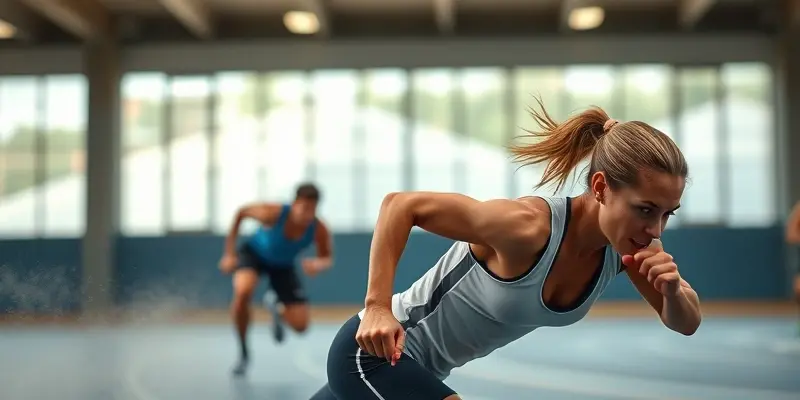Functional Movement Recovery: The Foundation for Prevention and Healing
If you’re passionate about fitness, chances are you or someone you know has experienced an injury. From sore knees to stubborn back pain, injuries can derail even the best-intentioned routines. But did you know that optimizing how you move—not just how much you move—can make all the difference? As a fitness coach with over a decade of hands-on experience, I’ve seen how functional movement recovery strategies can help both beginners and advanced athletes stay in the game and bounce back stronger.
Why Functional Movement Matters
Have you noticed how natural movements—like squatting down, reaching overhead, or climbing stairs—feel smooth in youth but get choppy over time? That’s because our joints and muscles are built to work together, not in isolation. Functional movement patterns mimic real-life actions, engaging multiple joints and muscle groups. When these patterns break down, the risk of injury spikes.
- Real-world example: A misaligned squat can strain your knees and back, while a proper form not only builds strength but protects vulnerable areas.
Injury Prevention: Movement Quality Over Quantity
Many injuries aren’t caused by a single accident but by poor movement repeated over time. Here’s how focusing on function reduces risk:
- Proper technique distributes physical loads evenly, sparing individual joints.
- Joint mobility and flexibility prevent muscle strains and sprains.
- Movement screening tools—like the Functional Movement Screen (FMS)—identify hidden weaknesses before they cause problems.
Self-Test: The Deep Squat
Stand tall with feet shoulder-width apart and slowly squat as low as you can. Can you keep your heels down and back upright? Difficulty or discomfort here might flag mobility issues worth addressing.
Step-By-Step Recovery for Beginners
Recovering from injury isn’t about sitting on the sidelines—it’s about smart progress. Here’s a practical guide:
- Start with mobility. Gentle range-of-motion exercises help joints and muscles regain function.
- Add activation drills. Low-resistance movements (think mini lunges or band walks) get neglected muscles firing again.
- Progressive loading. Gradually reintroduce weight or intensity as symptoms improve, always prioritizing form.
- Monitor yourself. Use simple assessments—like balancing on one leg or a slow bodyweight squat—to determine readiness for the next step.
For a detailed list of steps to regain full function after injury, check out our injury recovery checklist.
Nutrition: Fueling Recovery from the Inside Out
You can’t rebuild a house without quality materials, and recovery is no different:
- Protein (aim for 1.6–2.2g/kg body weight): vital for muscle repair.
- Vitamin C, D, zinc, and omega-3s: Support collagen regeneration and manage inflammation.
- Hydration: Water supports cellular repair—don’t overlook it!
- Minimize processed foods: They can impede healing.
If in doubt, consulting a sports dietitian can personalize your plan.
For more on the powerful role of vitamin C in recovery and injury prevention, see our science-based guide.
Tools and Technology: What Really Works?
Smart gadgets and basic tools can speed healing, but which are worth your time?
- Foam rollers and massage guns: Relieve soreness by increasing blood flow.
- Compression sleeves: Cut down on swelling during recovery.
- Resistance bands and mobility balls: Target sticky, underused muscles.
- Tech tip: High-tech gadgets like TENS units or cold-therapy devices are helpful, but best used with professional input.
Motivation and the Mental Game
Staying motivated when sidelined isn’t easy, but it’s possible:
- Set small, achievable goals: Celebrate every pain-free squat or new range of motion.
- Track your wins: Progress journals or fitness apps can visualize your journey.
- Use visualization: Picture yourself moving pain-free and returning to activity.
- Find support: Share your journey with friends, or seek input from coaches and physical therapists for accountability.
For techniques on harnessing visualization for healing, learn how mental strategies can accelerate your recovery journey.
Key Takeaways and Next Steps
Injury prevention and recovery aren’t just for elite athletes—everyone can benefit from better movement, smarter workouts, and focused nutrition. Remember:
- Quality of movement trumps quantity every time.
- Integrate functional movements into your training.
- Use technology and recovery tools wisely.
- Pay attention to what your body (and mind!) need.
- Ask for professional guidance when in doubt—recovery is a skill you can learn and master.
Ready to future-proof your fitness and bounce back better than ever? Start assessing your movement patterns today, and make recovery part of your training, not an afterthought.
Want more tips or have questions? Drop a comment—let’s keep the GymPulse community strong, healthy, and moving forward together!

